Read Reviews
The Best Tree Loppers
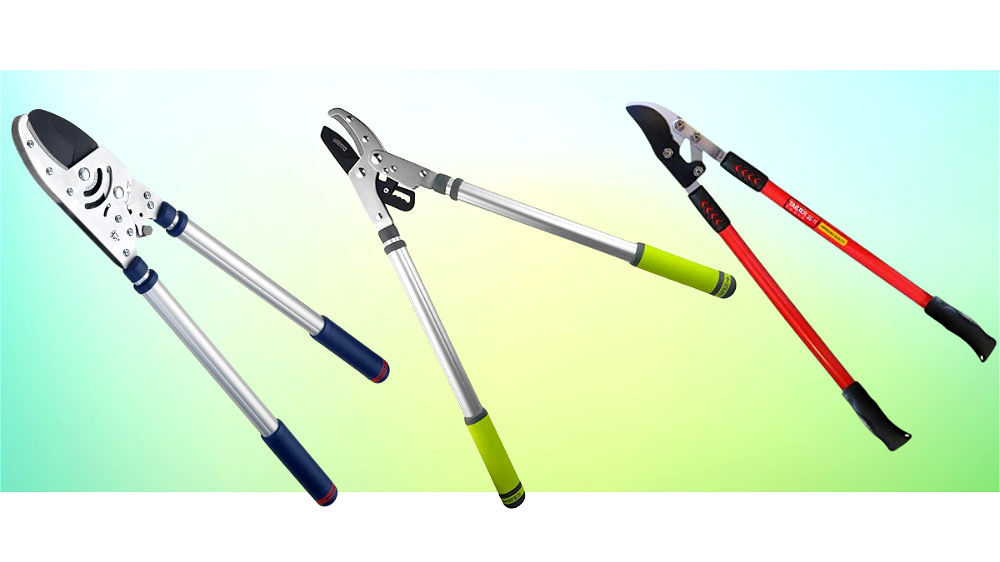
-
Best telescopic lopper - Davaon Store Telescopic Ratchet Loppers
-
Best for medium jobs - Spear and Jackson Heavy Duty Telescopic Ratchet Anvil Lopper
-
Best affordable anvil lopper - Spear and Jackson Telescopic Ratchet Anvil Lopper
-
Best pruning lopper - TABOR TOOLS GG11E Professional Bypass Lopper
-
Best for comfort - Fiskars Bypass Lopper
-
Best for working quickly - Fiskars PowerGear Lopper Bypass
-
Best value tree lopper - Spear and Jackson Telescopic Ratchet Bypass Lopper
-
Best pulley system lopper - GARDENA Combisystem Bypass Lopper
-
Best budget lopper - GRÜNTEK Anvil Pruning Loppers
-
Best lightweight option - AIRAJ Bypass Loppers
Tree Lopper Reviews
1. Davaon Store Telescopic Ratchet Loppers
Best telescopic lopper
- Telescopic function allows you to reach branches up to 1 m away
- When not extended, the ratchet action makes it easier to slice through branches up to 4.5 cm thick
- Handles are very easy to lengthen - simply twist the end and extend
- When the handles are fully extended you should only attempt to cut branches of up to 1.5 cm, any larger and the handles may bend
- Tricky to use in confined spaces as the handles need to be opened wide
- Weigh 1.6 kg so may cause fatigue with prolonged use - especially when the handles are extended as they feel unbalanced
- May struggle to cut through particularly hard branches
- Lopper Type
- Anvil
- Weight
- 1.6 kg
- Material
- Carbon steel blades
- Size
- 68 x 28.5 x 3.6 cm
- Cutting Width
- 4.5 cm
If you’re keen to avoid hiring professional help to deal with overgrown trees and hedges, the Davaon Store Telescopic Ratchet Loppers works through some pretty tough areas without too much difficulty. In fact, Davaon claim that this lopper has 5 times the cutting power of regular tree loppers.
Whilst that’s pretty hard to measure, the tree lopper is more than capable of cutting through branches of at least 4.5 cm thick, and this is made easier on the hands thanks to the built-in ratchet system. Thick branches are managed bit by bit, and the carbon-steel blades also help in getting through tough branches. This is the best tree lopper if you want a powerful, telescopic tool.
Even after extended use, the blade remains sharp, and it’s strong enough to cut through bamboo as well as different tree branches like laurel and leylandii hedges.
Considering how well this tree lopper cuts, and the fact that it’s telescopic as well, it offers good value for money. It’s inexpensive, whilst providing more versatility than non-telescopic loppers.
The handles extend from 68 – 100 cm which makes it useful for pruning both low and high branches. The only thing to look out for is not to force the lopper to cut very hard large branches when fully extended, as the aluminium handles can bend.
Even so, on most reasonably-sized branches, the ratchet system works well to create a neat cut, much quicker than would be achievable with traditional loppers.
Despite the aluminium handles, this lopper still weighs 1.6 kg which may get a little heavy. As with most telescopic loppers, the tree lopper can feel unbalanced when used fully extended for prolonged periods, so it may be necessary to take a few extra tea breaks (which, arguably, is hardlly the worst news…!).
Overall, this Davaon tree lopper offers a good combination of power and long-reach cutting. Therefore, it’s the best tree lopper overall: it’s useful if you want to cut larger branches and would also appreciate telescopic handles.
Did you find this review helpful?
2. Spear and Jackson Heavy Duty Telescopic Ratchet Anvil Lopper[ SAVE 3% ]
Best for medium jobs
- Can cut through branches up to 5 cm thick
- Telescopic handle allows you to reach higher branches - you get 80 cm from the extended lopper length plus arm reach
- Perfect for medium-duty gardening work
- The ratchet function makes it easier to cut through thicker branches without being so demanding on the hands
- Smaller branches take longer to cut than with traditional loppers because you still need to winch in the ratchet
- The ratchet system can be hard to implement if there isn't enough space to fully open the handles
- They weigh 1.91 kg which, especially when extended, may become tiring over time for those with limited mobility or strength
- Lopper Type
- Anvil
- Weight
- 1.91 kg
- Material
- Carbon steel blades
- Size
- 70.5 x 25.5 x 3.5 cm
- Cutting Width
- 5 cm
The Spear and Jackson Heavy Duty Telescopic Ratchet Anvil Lopper offers a great ‘middle ground’ between pruners and saws when cutting back hedges and trees. It’s telescopic, for reaching taller trees, and employs a ratchet mechanism to make cutting easier.
If you’re approaching a large hedge, this anvil lopper can cut through branches of at least 4.5 cm thick, snapping through them quite easily when traditional loppers would require a lot more effort.
One of the features that makes this lopper so effective on bigger branches is the ratchet mechanism. Unlike standard loppers, you winch the blades down so that the lopper takes the brunt of the work (it’s not a case of it relying on hand/arm strength alone).
Whilst this tree lopper can cut through smaller branches too, you’ll probably still want pruning shears on hand to make the job quicker – you have to winch the blades down every time, which can take a while if the branch is small.
You can, however, use this tree lopper on branches that are larger than 5 cm in diameter if you cut into them with a saw first, which is why they make a good middle ground between a pruning shear and a saw.
As mentioned, the lopper handles are telescopic, so they extend from 40 – 80 cm with a twist-and-lock mechanism, making it possible to cut higher branches without a ladder. This works well, but has its flaws – primarily because as the handles extend, the ratchet width gets wider. As a result, the lopper can be quite difficult to use in confined spaces as you need to be able to open them sufficiently wide to engage the ratchet first.
Made with aluminium handles and carbon steel blades, Spear & Jackson customers have rated this lopper as a long-lasting tool; however, it’s worth pointing out that the construction isn’t the most light weight. At 1.91 kg, the lopper may get tiring if used for long periods, especially when extended.
All in all, this is the best best tree lopper for medium jobs, making it a lot easier to cut through relatively thick branches with limited effort. As mentioned, this lopper is ideal when used in conjunction with pruning shears and a saw, to allow each tool to be used as effectively as possible.
Did you find this review helpful?
3. Spear and Jackson Telescopic Ratchet Anvil Lopper
Best affordable anvil lopper
- Can cut through branches up to 4.5 cm in diameter
- Telescopic handles are easy to adjust and lock using the knob at the end of the handle
- Due to design of telescopic locking mechanism, less chance of unscrewing handles by accident
- Ratchet mechanism opens wide making it easier to cut through thicker branches
- Particularly well suited to cutting dead wood and branches
- Handles can bend when extended if forced to cut thicker branches
- Lopper Type
- Anvil
- Weight
- 1.58 kg
- Material
- Carbon steel blades
- Size
- 67 x 29 x 4 cm
- Cutting Width
- 4.5 cm
This Spear and Jackson 8100RS Telescopic Ratchet Anvil Lopper employs a powerful anvil cutting mechanism and is able to cut branches up to 4.5 cm in diameter. This tree lopper is also among the cheapest of the loppers on this list, making it the best anvil tree lopper in terms of value for money.
Spear and Jackson are a reputable brand when it comes to garden tools and this tree lopper has some nice design features. For example, in order to lock the telescopic handles in place, you twist the lower portion of the hand grip instead of the whole thing. This makes them less likely to come loose and unscrewed by accident.
This lopper uses an anvil cutting mechanism. It employs a powerful cutting action making it better for pruning thicker branches. In particular, its anvil cutting mechanism makes it more suitable for pruning hard, dead branches.
The tree lopper also utilises a ratchet mechanism, allowing you to cut progressively. This opens relatively wide, making it easier to cut by doing it in many stages. This results in a powerful lopper that can cut branches up to 4.5 cm in diameter. It is great for medium duty work and the carbon steel blades maintain their sharpness over time.
One downside to how wide the lopper opens is that it can be a bit more challenging to use in dense areas with lots of branches. In these situations, it can be difficult to open the handles as wide as necessary.
With telescopic handles, the lopper can be extended for overhead pruning. However, the maximum cutting diameter shouldn’t be exceeded as this could cause the aluminium handles to bend. The handles extend from 46 cm to 72 cm.
There are soft grips on the handles and the aluminium construction helps to keep the weight down. Although still not the lightest tree lopper here, weighing 1.58 kg, it’s not amongst the heaviest either.
Overall, this tree lopper is a great choice if you’re looking for an anvil lopper at a reasonable price. It is powerful and versatile thanks to its telescopic handles.
Did you find this review helpful?
4. TABOR TOOLS GG11E Professional Bypass Lopper
Best pruning lopper
- Carbon steel blades have been hardened and sharpened
- Non friction coating helps ensures a clean cut
- Compound action system allows you to work through branches up to 4.5 cm diameter without much physical effort required
- 76 cm handles provide a good amount of leverage for most cuts
- Carbon steel blades can be replaced
- Relatively heavy so may get tiring over time
- Handles need to be opened very wide so they can be difficult to use in small areas
- Sharpness doesn’t last as long as expected
- Lopper Type
- Bypass
- Weight
- 1.66 kg
- Material
- Carbon steel blades
- Size
- 76 x 24 x 2.5 cm
- Cutting Width
- 4.5 cm
The TABOR TOOLS GG11E Professional Bypass Lopper is very powerful; its cutting potential is particularly impressive considering it doesn’t use a ratchet mechanism. This tree lopper is capable of cutting through branches up to 4.5 cm in diameter; therefore, it’s the best tree lopper if you want power without using a ratchet.
Cutting branches of 4.5 cm can be achieved by applying a fair amount of force on the lopper. However, anything under 4 cm in diameter is easy to slice through without requiring too much strength.
The lopper has hardened carbon steel blades that remain sharp even after heavy use. The blades have been treated with a low friction non-stick coating. This allows the lopper to cut through thicker branches with minimal physical effort required. The lopper uses a ‘compound cutting action’ which is a fairly unique mechanism. It concentrates the force you apply on the handles in order to cut larger branches. According to TABOR TOOLS, this cutting action multiplies the force applied to the blades by three.
The blades are extremely sharp and slice through green wood easily, as long as it does not exceed the diameter limit.
With rubberised grips on the handles, this tree lopper is also very comfortable to use. At 76 cm long, you’ve got ample leverage to get through tough branches and you’ll also be able to navigate some higher branches as well.
The only potential downside to this tree lopper could be its weight – at 1.66 kg it’s among the heavier loppers featured here. For this reason, it may become tiring to use over long periods of time.
Overall though, it seems that managing the weight is the compromise required in order to get the power that this tree lopper offers. It’s one of the best tree loppers if you want a powerful pruning tool, but also want more versatility and efficiency than you’d get with ratchet loppers. They can cut thick branches, but they’re also well equipped for cutting thinner ones as well.
Did you find this review helpful?
5. Fiskars Bypass Lopper
Best for comfort
- Extremely sharp blade slices through medium branches (up to around 3.8 cm)
- Getting enough leverage to cut is easy thanks to the longer handles
- Shock absorbing bumpers prevents jarring, abrupt cutting action
- Comfortable to hold thanks to the soft handle grips
- Blade coating reduces friction for a clean cut
- No ratchet mechanism so cutting is limited to slightly smaller branches
- Lopper Type
- Bypass
- Weight
- 1.32 kg
- Material
- Stainless steel blade
- Size
- 2.9 x 24.5 x 72.1 cm
- Cutting Width
- 3.8 cm
The Fiskars Bypass Lopper has been designed to be comfortable to use whilst remaining effective and easy to cut with. This is one of the best tree loppers in terms of comfort, thanks to the shock absorbing bumpers that are built into the design.
The shock absorbing bumpers help eliminate that jarring feeling at the end of each cut, meaning you can use the lopper for longer in comfort. The handles are also wide enough to prevent hands from knocking together or fingers getting caught. This tree lopper is easy enough for amateur or beginner gardeners to use, but it’s equally suitable for experienced gardeners wanting to neaten up their hedges and trees without the use of a saw.
The loppers have a durable, stainless steel blade that stays sharp even after heavy use. The blade is ideal for cutting through branches around 2.5 – 3.8 cm (1 – 1.5”) in diameter. Although this lopper isn’t designed for heavy duty work, on small-to-medium soft branches it will produce a clean and powerful cut.
One thing to note is that this lopper doesn’t have a ratchet mechanism which is also why it is limited to slightly smaller branches. It measures 71 cm long in total, with no telescopic handles. This will be suitable for standard pruning tasks, but you may struggle to reach higher branches without a ladder.
Weighing 1.32 kg, this is a mid-weight tree lopper. It’s a well-balanced tool overall..
The blade has a low-friction coating, meaning each cut will be smooth and the blades won’t snag. This coating allows the lopper to glide through wood and prevents it from getting stuck. This coating also reduces the chances that the lopper blades will rust, although the tree lopper should still be stored carefully in order to prolong its lifespan. The handles have soft grips which adds to both the ease of use and safety
If you’re looking for a comfortable and easy-to-use pruning tool, this is the best tree lopper to consider. It is extremely sharp and cuts well. Plus, the shock absorbers help reduce any jarring movements from the cutting action. Also, even though there is no ratchet system, this may actually be preferred by some people. Although ratchets can help with cutting thicker branches, they can also slow you down when it comes to everyday pruning.
Did you find this review helpful?
6. Fiskars PowerGear Lopper Bypass[ SAVE 12% ]
Best for working quickly
- Weigh just 1.06 kg so won’t get too tiring if used for long periods of time
- Grip is both comfortable and sufficiently non-slip
- Suitable for both left and right handed users
- Utilise a rack and pinion mechanism to make it less tiring to cut through branches up to 5 cm in diameter
- May be difficult to use in small spaces as the handles need opening wide for maximum effectiveness on thick branches
- Handles aren’t telescopic so you may need a stepladder to reach branches above your head
- Require regular oiling to keep the rack and pinion mechanism working efficiently
- Only intended for use on green, live wood, not old dry branches
- Lopper Type
- Bypass
- Weight
- 1.06 kg
- Material
- Stainless steel blade
- Size
- 69.2 x 18 x 69.2 cm
- Cutting Width
- 5 cm
If you’re fed up of pruning taking ages, this Fiskars PowerGear Lopper Bypass will shave some time off compared to traditional loppers. It’s the best tree lopper for working quickly and easily.
The reason for this is two-fold: the lopper is relatively light, at 1.06 kg, meaning it won’t slow jobs down by being tiring to hold, plus it uses a ‘rack and pinion’ system to cut through thicker branches.
This lopper is powerful – capable of cutting through branches up to 5 cm thick – and can also cut smaller branches because the ratchet doesn’t need to be fully extended to work. It only needs to be opened as much as the branch size demands.
However, it does therefore still have some of the same problems as other ratchet loppers when trying to cut thick branches in confined spaces, because there’s not always enough room to open the handles wide enough.
The handles are made from fibreglass-reinforced plastic which is both strong and light, and the precision-steel blades have a non-stick coating which should reduce the number of times you have to stop working to clean the blade.
Unlike some other models featured on this list, this Fiskars lopper isn’t telescopic, so it has a set length of 69.2 cm. The general consensus is that this offers a good length-to-weight ratio, and the lopper is useful for both closer jobs as well as those that require reaching a little further. Of course, it is worth bearing in mind, particularly if you have tall hedges and trees, that this lopper won’t have quite the same range as telescopic loppers.
Did you find this review helpful?
7. Spear and Jackson Telescopic Ratchet Bypass Lopper
Best value tree lopper
- Handles extend to 76 cm for taller branches
- Ratchet action means less hand strength is required to cut larger branches
- Handle grips are comfortable and ergonomic
- Ratchet action means cutting thin branches can take longer than it would with traditional loppers
- Not particularly light at 1.62 kg so may become tiring, especially when used extended or horizontally
- There is no locking mechanism to keep the blades shut when carrying them so they need to be handled with care
- Lopper Type
- Bypass
- Weight
- 1.62 kg
- Material
- Carbon steel blade
- Size
- 75.1 x 10.6 x 3.6 cm
- Cutting Width
- 4 cm
Spear & Jackson have a good reputation amongst gardeners for creating quality equipment, and their Razorsharp 8090RS Telescopic Ratchet Bypass Lopper is a good all-round tool for the garden.
It works with a bypass cutting action meaning this tree lopper is best suited to creating clean cuts on smaller, green branches. It isn’t as heavy as Spear & Jackson’s 8290RS anvil lopper, but still weighs 1.62 kg. This makes it a more manageable choice if you can get away without needing the anvil cutting action, although breaks will likely still be needed. It has an un-extended length of 45 cm and an extended length of 76 cm.
When it comes to cutting, this tree lopper uses a ratchet mechanism and can get through branches of up to 4 cm in diameter. It is fitted with carbon-steel blades that have been coated to protect them from rust. They seem to maintain their sharpness well even with regular use.
Considering Spear & Jackson’s reputation, this is also one of the best tree loppers in terms of value for money – it’s relatively inexpensive, yet brings a lot to the table in terms of quality and design. The main thing to bear in mind is that this tree lopper’s maximum cutting diameter is a little lower than some and they’re best suited to soft, green growth.
Did you find this review helpful?
8. GARDENA Combisystem Bypass Lopper
Best pulley system lopper
- Very long rope, providing a potential reach of almost 4 m
- Very little effort required to cut branches 2.5 - 3.5 cm in diameter
- Fairly lightweight at just over 1 kg
- Telescopic pole needs to be purchased separately
- Pulley rope is on the outside of the pole which can lead to tangles if it isn’t properly managed
- Lopper Type
- Bypass
- Weight
- 1.07 kg
- Material
- Hardened blades
- Size
- 40.6 x 27.9 x 12.7 cm
- Cutting Width
- 3.5 cm
This GARDENA Combisystem Bypass Lopper is a little different to your standard two-handle garden lopper. It’s the best tree lopper if you are more comfortable using a pulley system, capable of cutting through branches up to 3.5 cm in diameter. One benefit of a pulley system is that it can be easier on the wrists and useful for those who lack grip strength.
The handle is not included, so needs to be bought separately. This means you can choose which length pole will be most appropriate for the job – or even purchase more than one pole for different tasks. The pole needs to be oval to be compatible.
In terms of the lopper itself, the bypass cutting mechanism works well and it has a long pull rope length of 4.7 m – perfect for use with telescopic poles. Consisting of hardened blades, this lopper slices through branches cleanly and smoothly without damaging the tree. This makes it ideal for pruning live branches. The blades have a hooked design that helps keep the branch in place while you slice, meaning the cut is clean even when cutting branches high up. The non-stick coating also helps create a clean cut.
The lopper is comfortable to use thanks to the D-grip handle part way up the pole. This helps provide stability. The pulley rope can be secured around the D-grip so that it can’t become knotted or tangled during use or storage.
There aren’t many downsides to this tree lopper, although the pulley cord can be fiddly as it’s fairly long which may take a bit of getting used to. However, its length is also an advantage as it gives a long reach. It also runs down the outside of the lopper, whereas some pulley loppers encase the cord, so you do need to manage it properly to avoid tangles.
Perfect for standard domestic pruning, this is the best tree lopper if you want to use a pulley system and a telescopic pole. Although not designed for the thickest of branches, the ease of use and pulley system means this lopper excels during medium duty pruning tasks.
Did you find this review helpful?
9. GRÜNTEK Anvil Pruning Loppers[ SAVE 11% ]
Best budget lopper
- Very good value for money and a lot more affordable than others on the market
- Lightweight at just 687 g, so won’t get tiring if used for long periods of time
- Grip is both comfortable and non slip
- Suitable for both left- and right-handed users
- Gear action is smooth to use and helps produce a smooth cut
- At 47 cm, these loppers are relatively short and don’t give as much reach as some other options
- Limited to reasonably small branches up to 3.2 cm in diameter
- Lopper Type
- Anvil
- Weight
- 0.69 kg
- Material
- Carbon steel blade
- Size
- 47 x 16.5 x 2.5 cm
- Cutting Width
- 3.2 cm
An excellent budget-friendly option, the GRÜNTEK Anvil Pruning Lopper is a good all-rounder that can be used on both green and dry wood. Thanks to its reasonable price, it’s the best anvil tree lopper to buy on a budget.
The tree lopper employs a gear drive system which helps concentrate the force of the carbon-steel blade. The anvil section of the blade is also adjustable, so you can make the cutting gap smaller or wider as required.
It is capable of tackling green branches up to 3.2 cm in diameter, and dry wood up to 2.8 cm in diameter. The overall length of this tree lopper is approximately 47 cm, so it is a good choice for standard pruning, but has no telescopic extending capacity.
The handles are round and lightweight, made from aluminium with non-slip handles. Another benefit to this tree lopper is that it is very lightweight, weighing just 687 g. It is well balanced and easy to control. Also, because of the design, this tree lopper is suitable for both left- and right-handed users.
Overall, this is the best tree lopper to buy on a budget, particularly if you want an anvil cutting option. It also has sufficient quality not to feel like a budget option. Despite coming from a lesser known brand, this tree lopper is sturdy and cuts well.
Did you find this review helpful?
10. AIRAJ Bypass Loppers
Best lightweight option
- Only 38.5 cm long so perfect for working in dense growth with lots of branches
- Very lightweight at 600 g making them manageable for anyone concerned with controlling heavier tools
- Equally suitable for both left and right handed users
- Blade is sharp and cuts cleanly
- Spare blades included
- Shorter length does not give as much leverage as longer loppers
- Relatively small cutting capacity of branches up to 2.5 cm in diameter
- Lopper Type
- Bypass
- Weight
- 0.63 kg
- Material
- Carbon steel blade
- Size
- 40.9 x 15.9 x 3.6 cm
- Cutting Width
- 2.5 cm
Due to its small size, the AIRAJ Bypass Lopper is a great choice if you are pruning in tight areas. It’s lightweight, easy to manoeuvre and capable of cutting through branches of around 2.5 cm in diameter.
This compact tree lopper is exceptionally lightweight weighing just 600 g. It has an overall length of 38.5 cm, making it one of the smallest tree loppers featured here – something which will make it easier to work in dense areas of the garden. This tree lopper will be suitable for pruning low level shrubs, trees and bushes.
The blades are made from high carbon steel, complete with a non-stick coating that helps create a smooth and clean cut. This coating also helps to prevent rust. The curved counter blade offers stable positioning on the branch to help achieve a clean cut.
The handles are ergonomic, with textured non-slip grips that allow you to work comfortably for an extended period of time. As an added bonus, this tree lopper is suitable for both left and right handed users.
Of course, due to the handle length, this tree lopper does have its limitations. While the shorter length helps keep the weight down and allows you to work in tight areas, it does mean that you sacrifice some of your leverage, or cutting power. For this reason, this tree lopper isn’t quite as powerful as others on the market, and you may struggle to get through thicker branches. The maximum branch size that it can easily cut through seems to be around 2.5 cm.
Overall, this is the best tree lopper for anyone who’s after a smaller, lightweight tool. This might be due to working in tight areas, or not feeling confident with handling larger garden equipment. Either way, it’s exceptionally lightweight and manageable. The only thing to bear in mind is that it is limited to branches of around 2.5 cm in diameter.
Did you find this review helpful?
Compare Product Features
Use the dropdown to sort the table by the feature you want to see.
Davaon Store Telescopic Ratchet Loppers
- 4.9
- Anvil
- 1.6 kg
- Carbon steel blades
- 68 x 28.5 x 3.6 cm
- 4.5 cm
Spear and Jackson Heavy Duty Telescopic Ratchet Anvil Lopper
- 4.9
- Anvil
- 1.91 kg
- Carbon steel blades
- 70.5 x 25.5 x 3.5 cm
- 5 cm
Spear and Jackson Telescopic Ratchet Anvil Lopper
- 4.8
- Anvil
- 1.58 kg
- Carbon steel blades
- 67 x 29 x 4 cm
- 4.5 cm
TABOR TOOLS GG11E Professional Bypass Lopper
- 4.8
- Bypass
- 1.66 kg
- Carbon steel blades
- 76 x 24 x 2.5 cm
- 4.5 cm
Fiskars Bypass Lopper
- 4.7
- Bypass
- 1.32 kg
- Stainless steel blade
- 2.9 x 24.5 x 72.1 cm
- 3.8 cm
Fiskars PowerGear Lopper Bypass
- 4.7
- Bypass
- 1.06 kg
- Stainless steel blade
- 69.2 x 18 x 69.2 cm
- 5 cm
Spear and Jackson Telescopic Ratchet Bypass Lopper
- 4.6
- Bypass
- 1.62 kg
- Carbon steel blade
- 75.1 x 10.6 x 3.6 cm
- 4 cm
GARDENA Combisystem Bypass Lopper
- 4.6
- Bypass
- 1.07 kg
- Hardened blades
- 40.6 x 27.9 x 12.7 cm
- 3.5 cm
GRÜNTEK Anvil Pruning Loppers
- 4.5
- Anvil
- 0.69 kg
- Carbon steel blade
- 47 x 16.5 x 2.5 cm
- 3.2 cm
AIRAJ Bypass Loppers
- 4.5
- Bypass
- 0.63 kg
- Carbon steel blade
- 40.9 x 15.9 x 3.6 cm
- 2.5 cm
How to Choose The Best Tree Lopper
Tree loppers are immensely useful tools, suitable for many different tasks. They’ll help keep your garden looking neat by trimming hedges, pruning trees, and cutting back shrubs.
Loppers offer the perfect midpoint between pruning shears and pruning saws. In fact, given that some loppers can cut branches of up to 5 cm in diameter, you may end up using them more than other tools.
Finding the best tree lopper to use in your garden will depend on what you plan to use it for. To help you in your search, here’s everything you need to know about these useful tools:
The Benefits of Using Tree Loppers
A logical place to kick this article off – what are the benefits of using tree loppers and why buy them in the first place? Their uses stretch far and wide, but a couple of common reasons for needing to use tree loppers in the garden are:
-
- To stop trees from blocking out sunlight. Tall, thick trees/hedges may be blocking light reaching your garden, making things feel a bit dark. If this is the case, other plants may not be getting enough light either. Lopping and pruning is necessary to make sure trees don’t overpower nearby plants and flowerbeds!
- To stop plants from interfering with each other. Again, if trees, plants or shrubs are positioned close together, you may find that their branches start to intertwine. This isn’t great for the aesthetics of the garden or the health of the plants – lopping back some branches can stop plants from meddling with each other.
- To keep peace with the neighbours. No matter how good your relationship with your neighbour, trees that start to encroach on their property are going to cause tension. Pruning and lopping will keep branches on your side of the fence and avoid any fraying nerves.
- To maintain shape. Sometimes bushes, shrubs and trees will take things into their own hands (branches?) and start to grow in unexpected directions. To keep things looking neat, pruning and lopping is necessary.
- For health and safety purposes. Pruning can help protect the health of the tree just as much as the health of anyone in the near vicinity. Damaged branches should be lopped off to avoid them breaking and causing damage to property, other plants, or people. Diseased branches need to be removed to try to stop the problem from spreading through the tree.
READ NEXT: The Best Telescopic Pole Hedge Trimmers
The Difference Between Loppers and Pruners
There is a fair amount of confusion, and crossover, in the branch-cutting world when it comes to the difference between loppers and pruners. Being sure of each tool’s purpose can help when it comes to choosing which one to use for the job.
“Pruners” generally refers to a small one-handed tool which is used for cutting shrubs and flower bushes (like rose bushes). Thanks to their compact size and proximity to the plant, these pruners are great for ground-level jobs and for accurately cutting small plants.
There are also ‘pole pruners’ which have a mechanism like a litter picker. They consist of one long pole. These are used for cutting higher branches and only require one hand to activate the cutting mechanism. The other hand stabilises the pole. They’re great tools, which will stop you from having to get the ladder out, but they’re better suited to light work – they don’t have the same strength as tree loppers.
So, what about tree loppers? What distinguishing features do they have?
Traditional tree loppers essentially resemble long secateurs. They look like big scissors.
A lot of tree loppers will have a ratchet that makes it easier to prune larger branches. This allows the blade to be ‘winched’ down to cut branches, making the job easier on the hands. Ratchet loppers are often more suitable for a variety of tasks, and can cut branches up to 5 cm in diameter; however, this does depend on the model, as some won’t be as strong.
More basic tree loppers won’t have a ratchet system.
READ NEXT: The Best Pole Saws
Anvil Vs. Bypass Loppers
There are two different types of cutting systems that loppers and pruners may have.
Loppers with an ‘anvil’ cutting system have one cutting blade and one anvil blade. The cutting blade moves, whilst the anvil blade stays still. It works similarly to a knife cutting on a chopping board – the branch finds itself trapped under the cutting blade (the knife) and is sliced against the anvil (the chopping board).
If the loppers make use of a ‘bypass’ cutting system, the two blades will glide past each other, like scissors. Both of the blades move, and the branch is cut when the two blades cross.
So, which cutting system makes for the best tree lopper?
Anvil Loppers: Pros and Cons
With anvil blades, the cutting action is more powerful. All of the cutting force is distributed over the one moving blade. As a result, loppers using this system will be better suited for cutting thicker, tougher branches.
However, a disadvantage of anvil loppers is that they are more likely to damage and crush the branch. When the cutting blade comes down, the force is felt on both sides of the branch being cut, crushing it structurally.
If cuts aren’t clean, and plants get crushed, it not only damages the plant but also increases the risk of bacteria entering.
Therefore, anvil loppers are not ideal for creating neat, clean cuts, and are better suited to cutting dead branches than live ones.
Bypass Loppers: Pros and Cons
Loppers with bypass blades require more strength than anvil loppers. Both blades need to be powered to move past each other. As a result, it is more difficult to cut through thicker branches using bypass blades.
That said, bypass blades create a much cleaner cut. Thanks to the bypass cutting action, only the side of the branch which is being discarded is in danger of being crushed.
Bypass blades are therefore well suited to pruning living stems and branches as they won’t damage the remaining plant.
Telescopic Handles
Jobs are often made easier if you can avoid lugging a ladder around.
Loppers with telescopic handles can allow you to have a much further reach when pruning and lopping. Some telescopic loppers can extend to up to a metre in length making it much easier to reach the upper branches of trees and bushes.
You do sometimes have to forfeit a bit of accuracy when using telescopic loppers. It can be harder to have complete control over the exact cutting point from so far away.
However, we’re generally talking about being out by centimetres, which shouldn’t be too noticeable at the top of trees and hedges.
It’s advisable not to extend telescopic loppers more than necessary for the job in hand; the longer the handles are extended the weaker they will become. Such is the nature of telescopic handles.
READ NEXT: The Best Ratchet Secateurs
Tree Lopper FAQs
Bypass loppers act similarly to scissors. They have two blades that ‘bypass’ each other, cutting through the branch when the two blades slice together. To use bypass loppers, you keep the loppers steady with your weaker hand, and with your stronger hand push down on the handle to move the blade and cut the branch.
Anvil loppers have one blade which moves to crush the branch against a metal surface on the other side. The cut might not be as clean as with bypass loppers, but anvil loppers tend to be more capable of dealing with thicker material.
- Prune in late winter or early spring, before new growth starts.
- Determine which branches are the skeleton branches (important main branches) as these should not be removed.
- Decide which branches you want to remove first – these should be the ones that show any sign of damage. Simply remove these branches using your pruners/loppers.
- Any areas that are very thick with branches can be thinned.
- Remove branches that cross over so that air can circulate around the tree.
- Eliminate any branches that are growing inwards.
- If you are pruning for aesthetics, remove any branches that stick out at odd angles. You may need to stand a short distance away to identify these.
To prune safely, wear a long sleeve top, gloves to protect your hands, and safety goggles at all times. If you are pruning taller branches, a hard hat is highly recommended. For safely pruning the branches above your head, it’s recommend to use telescopic loppers as opposed to a ladder.
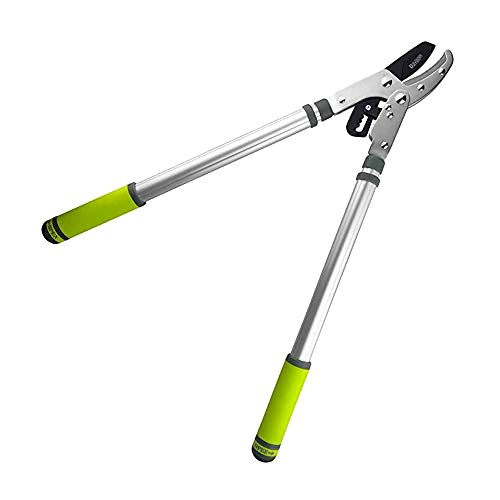
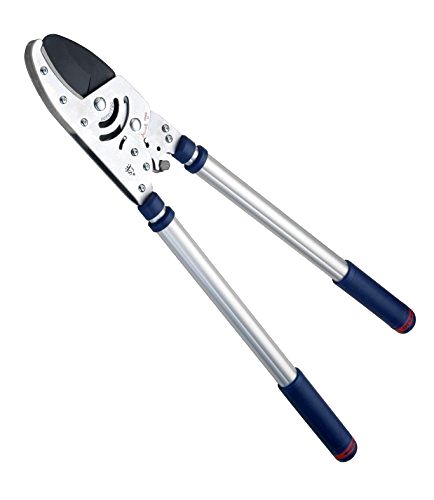
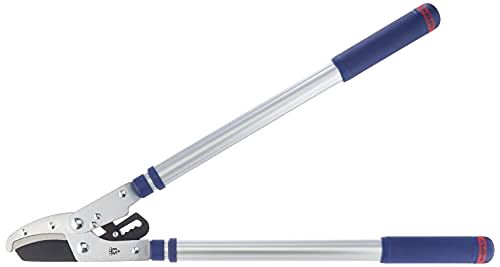
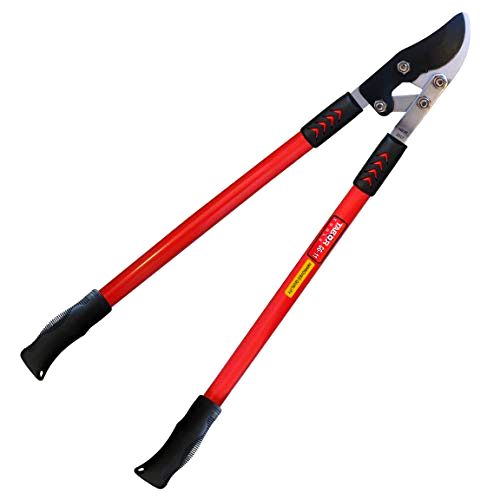
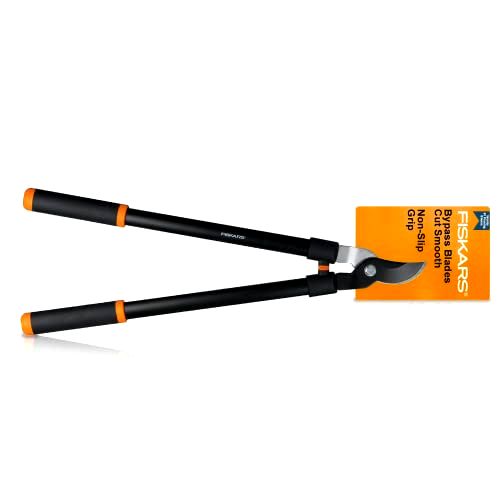
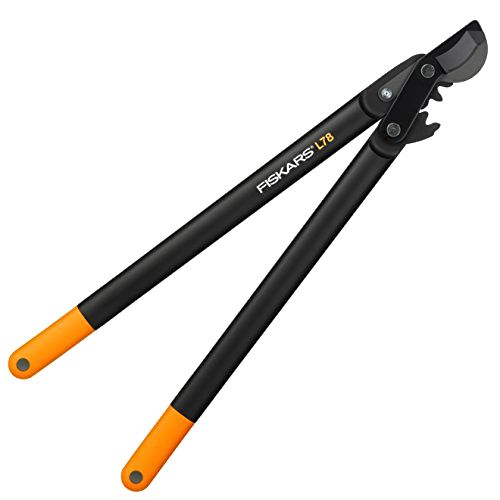
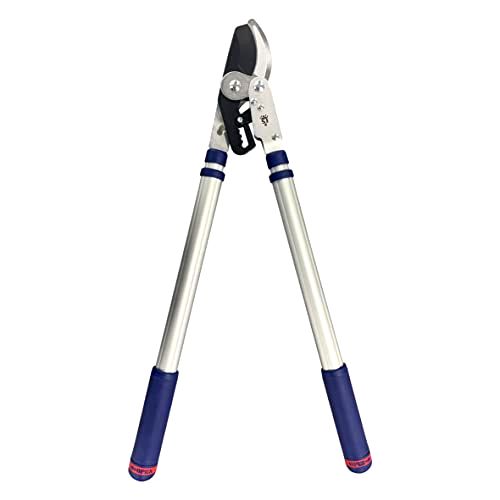
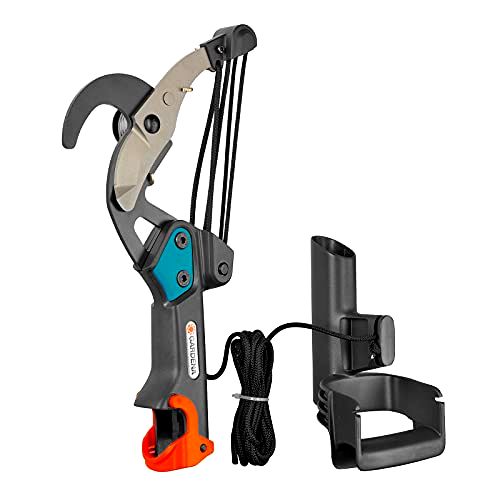
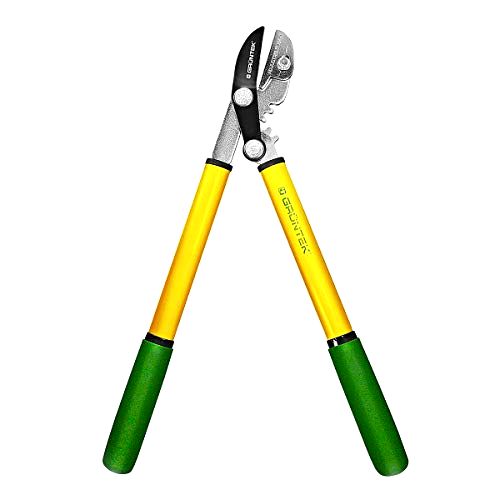


Share